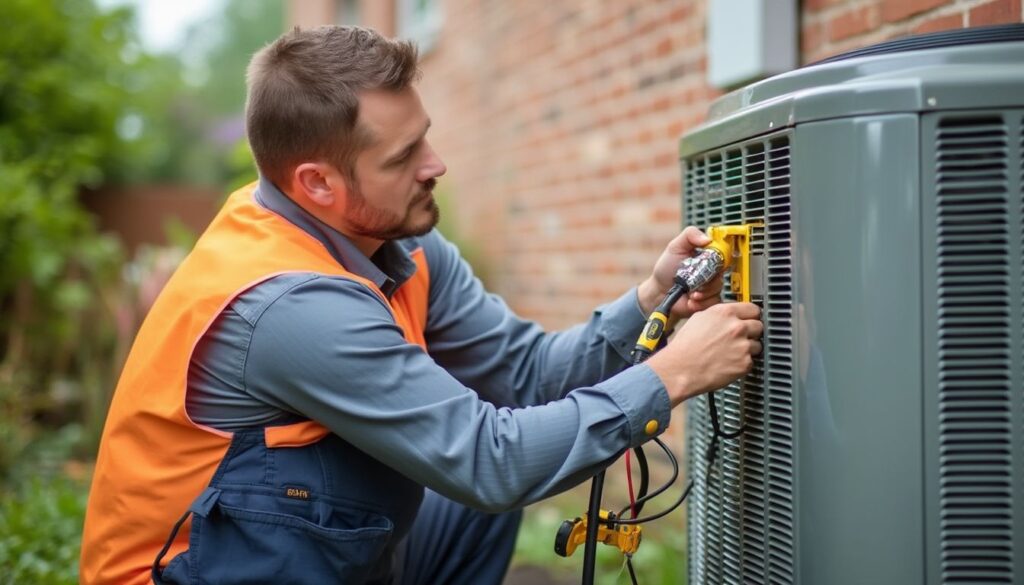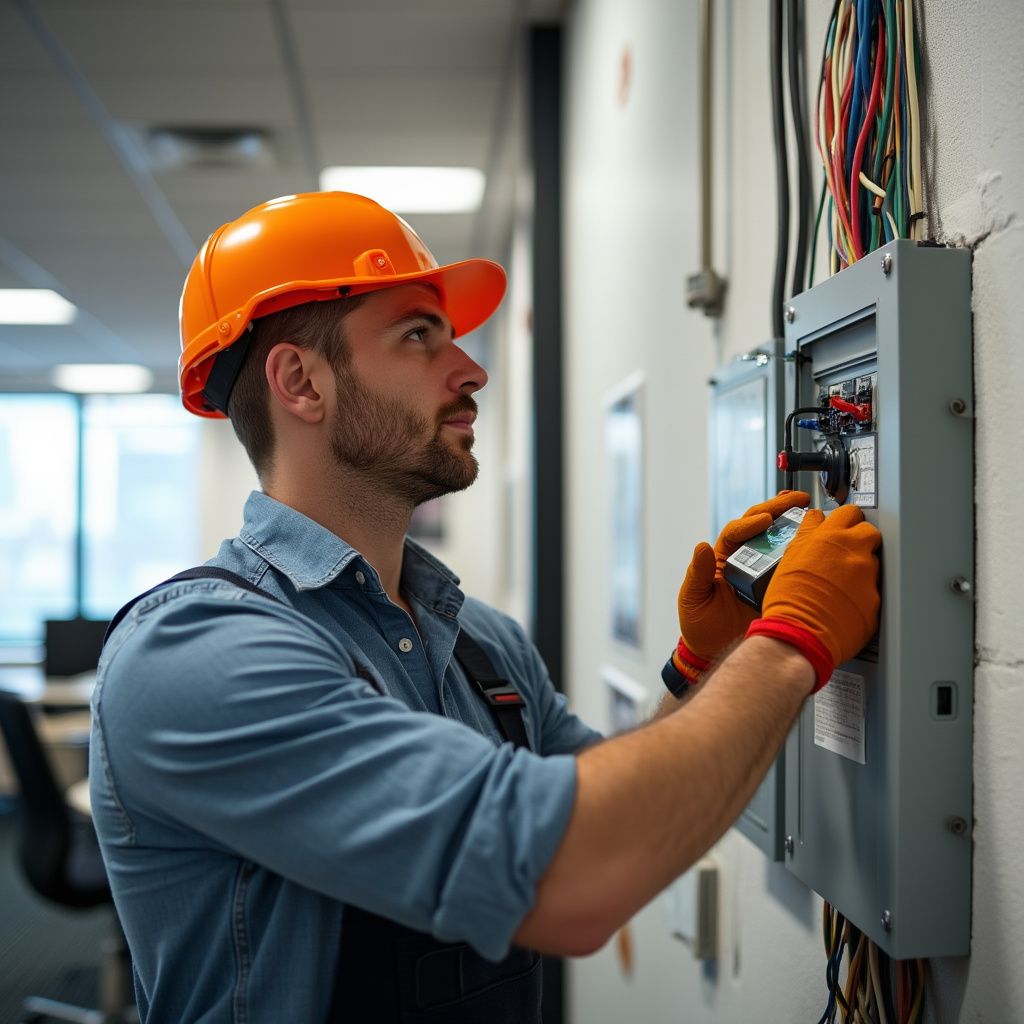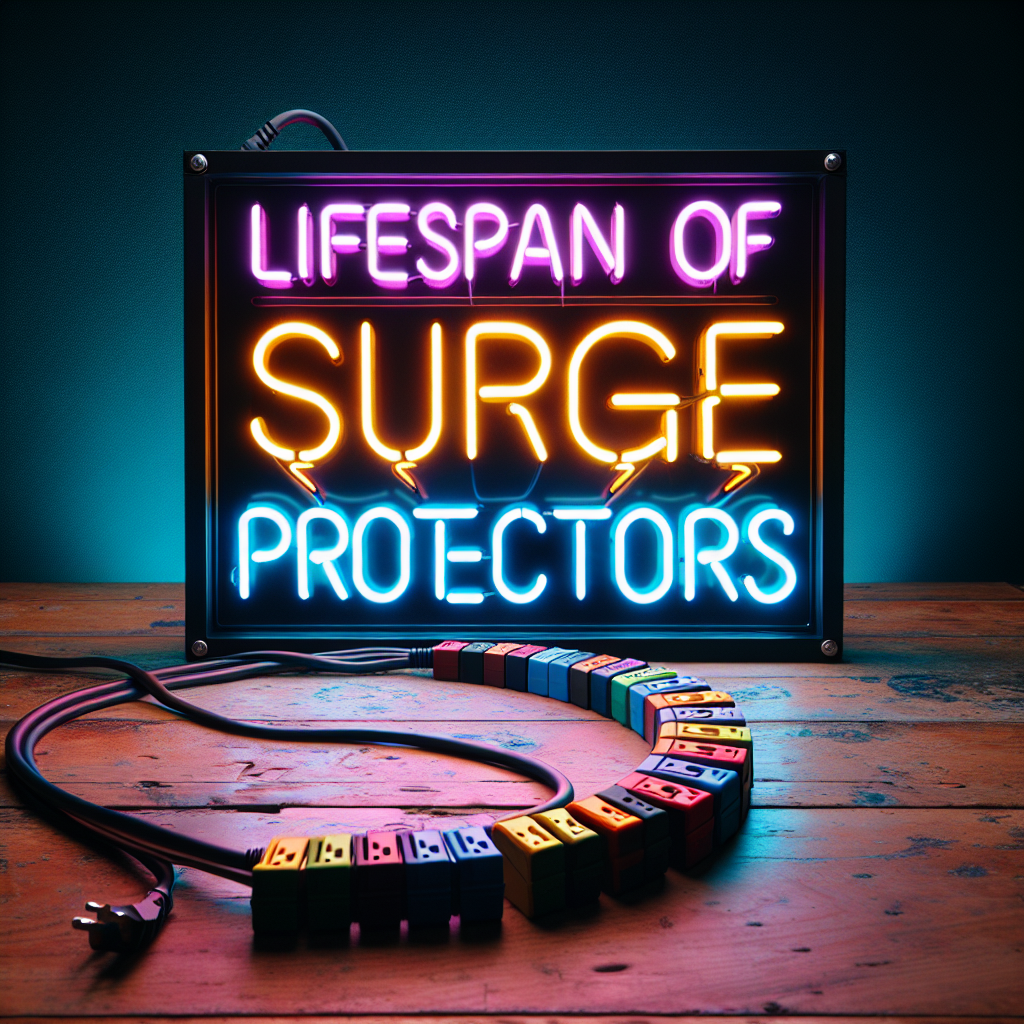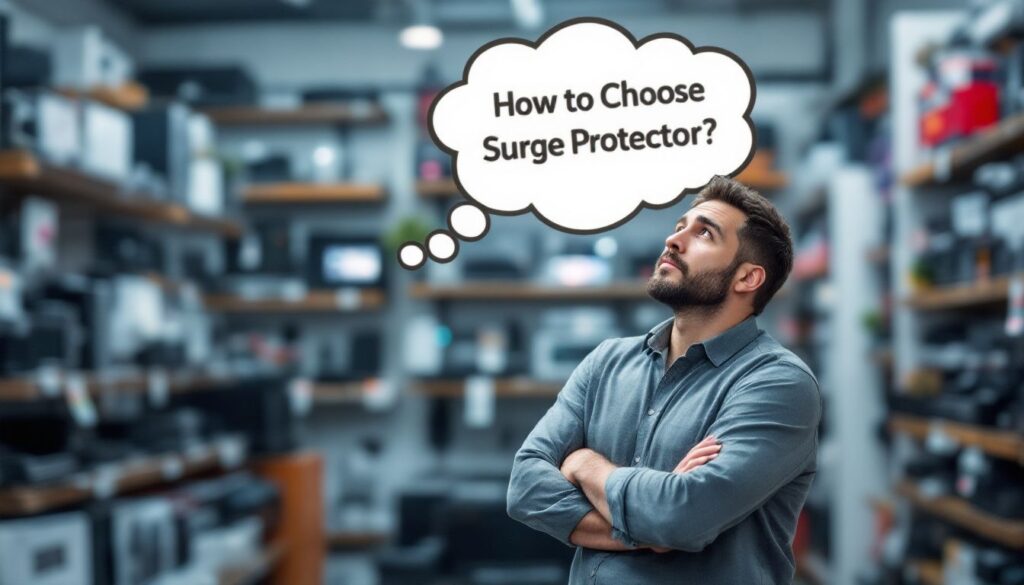
Power surges can strike without warning, and their impact on your air conditioner can be devastating. These sudden voltage spikes often damage critical components like circuit boards and capacitors, leading to costly repairs or even complete system failure.
Protecting air conditioners from such risks should be on the to-do list for every homeowner. A surge protector offers a simple yet effective solution by diverting excess electricity away from your AC unit. If you’ve ever wondered how to install surge protector on AC unit, this guide will help you safeguard your investment and ensure its longevity.
Why Do You Need a Surge Protector for Your Air Conditioner?
Power surges are more common than most people realize, and their effects on your air conditioner can be severe. These sudden spikes in electrical voltage often occur during storms, power outages, or when high-powered appliances cycle on and off. Without proper protection, your AC unit becomes vulnerable to significant damage.
The Risks of Power Surges
Power surges can wreak havoc on electrical systems, especially sensitive devices like air conditioners. When a surge occurs, the sudden increase in voltage can overwhelm the internal components of your AC unit.
Key parts such as the compressor, control board, and thermostat are particularly at risk. Over time, even minor surges can degrade these components, leading to costly repairs or premature failure.
For example, studies have shown that power surges can cause overheating in HVAC systems, damaging critical parts like motors and capacitors. This damage not only disrupts the cooling process but also shortens the lifespan of your air conditioner.
Ignoring these risks can result in spending thousands of dollars on repairs or replacements.
How Power Surges Can Damage Your AC Unit
The damage caused by power surges often goes unnoticed until it’s too late. A single surge can fry the circuit board, overload the capacitor, or even short out the compressor. These components are essential for your air conditioner to function properly. When they fail, the entire system can shut down.
In addition to immediate damage, repeated exposure to voltage spikes can wear down your AC unit over time. This gradual deterioration reduces efficiency, increases energy consumption, and leads to higher utility bills.
Protecting your air conditioner from these risks is crucial to maintaining its performance and longevity.
The Role of Surge Protectors in Preventing Electrical Damage
A surge protector acts as a shield for your air conditioner, diverting excess electricity away from the unit during a power surge. By doing so, it prevents voltage spikes from reaching sensitive components and causing damage.
Surge protectors are specifically designed to handle the high electrical demands of HVAC systems, making them an essential investment for any homeowner.
Installing a surge protector not only safeguards your AC unit but also provides peace of mind. Knowing that your air conditioner is protected from unexpected electrical issues allows you to focus on enjoying a comfortable home environment.
Additionally, surge protectors can help reduce repair costs and extend the lifespan of your AC unit, saving you money in the long run.
Benefits of Using a Surge Protector for Your AC Unit
Protecting your air conditioner is not just about avoiding costly repairs; it’s about ensuring your home stays comfortable and your investment lasts. A surge protector offers multiple advantages that go beyond basic protection. Let’s explore how it can make a difference.
Protection Against Voltage Spikes
Voltage spikes are unpredictable and can occur due to storms, power outages, or even the operation of large appliances. These sudden surges in electricity can overwhelm your air conditioner’s internal components, leading to damage or complete failure. Installing a surge protector acts as a safeguard, intercepting these spikes before they reach your AC unit.
For instance, without a surge protector, a single power surge could fry the circuit board or damage the compressor. With one in place, the excess voltage gets diverted, keeping your air conditioner safe.
This simple device ensures that your AC unit remains operational even during electrical disturbances, giving you peace of mind.
Prolonging the Lifespan of Your Air Conditioner
An air conditioner is a significant investment, and no one wants to replace it prematurely. Power surges can cause gradual wear and tear on critical components like motors and capacitors. Over time, this hidden damage reduces the efficiency and lifespan of your AC unit.
A surge protector prevents this deterioration by shielding your air conditioner from electrical stress. By maintaining the integrity of its components, it helps your AC unit perform optimally for years.
Homeowners who use surge protectors often notice fewer breakdowns and longer-lasting systems compared to those who don’t.
Reducing Repair and Replacement Costs
Repairing or replacing an air conditioner can be expensive. A damaged compressor or circuit board alone can cost hundreds or even thousands of dollars to fix. Frequent repairs also add up, straining your budget over time.
A surge protector minimizes these expenses by preventing damage in the first place. It acts as a barrier, stopping voltage spikes from reaching your AC unit. This proactive approach saves you from unexpected repair bills and extends the time between replacements.
In the long run, the cost of installing a surge protector is far less than the potential expenses of repairing or replacing a damaged air conditioner.
What You Need for Surge Protector Installation
When preparing for surge protector installation, having the right tools and materials is essential. A well-planned setup ensures the process goes smoothly and minimizes the risk of errors.
Let’s break down what you’ll need to get started.
Tools and Materials Checklist
Before diving into the installation process, gather all the necessary tools and materials. This step saves time and ensures you don’t have to pause midway to find missing items.
Here’s a checklist to guide you:
- Screwdrivers: Both flathead and Phillips screwdrivers are essential for opening panels and securing connections.
- Wire Strippers: These help in removing insulation from wires for proper connections.
- Voltage Tester: Use this to confirm that the power supply is off before working on your AC unit.
- Drill and Screws: A drill is necessary for mounting the surge protector near the electrical disconnect box.
- Electrical Tape: This secures wire connections and provides additional insulation.
- Surge Protector: Choose a dedicated HVAC surge protector designed specifically for air conditioners.
- Protective Gear: Safety goggles and insulated gloves protect you during the installation process.
Having these tools and materials ready ensures a seamless installation experience. It also reduces the chances of mistakes that could damage your AC unit or compromise safety.
Selecting the Right Surge Protector for Your AC Unit
Choosing the correct surge protector is crucial for effective protection. Not all surge protectors are created equal, and selecting one tailored to your air conditioner’s needs makes a significant difference.
Here’s what to consider:
- Type of Surge Protector: Opt for a dedicated HVAC surge protector. These devices are specifically designed to handle the high electrical demands of air conditioning systems. They protect both the indoor and outdoor units from voltage spikes caused by storms, power outages, or damaged power lines.
- Voltage Rating: Ensure the surge protector matches the voltage requirements of your AC unit. Most residential air conditioners operate on 240 volts, so the surge protector should be compatible with this rating.
- Joule Rating: The joule rating indicates the energy absorption capacity of the surge protector. A higher joule rating offers better protection. For air conditioners, look for a surge protector with at least 1,000 joules.
- Brand and Warranty: Choose a reliable brand that offers a warranty. A good warranty reflects the manufacturer’s confidence in the product’s quality and durability.
- Installation Compatibility: Verify that the surge protector can be easily installed near your AC unit’s electrical disconnect box. Some models come with mounting brackets for added convenience.
Selecting the right surge protector ensures your air conditioner remains safe from electrical damage. It also extends the lifespan of your AC unit by preventing wear and tear caused by power surges.
Who Should Try Installing a Surge Protector?
Installing a surge protector for your air conditioner can seem like a straightforward task, but it’s not for everyone. The process involves working with electrical components, which requires a certain level of skill and confidence.
Let’s explore who might be suited for this task and when it’s best to call in a professional.
Homeowners with Basic Electrical Knowledge
If you have experience handling electrical tasks around the house, you might feel comfortable installing a surge protector for your air conditioner. Tasks like replacing a light switch or installing a ceiling fan require similar skills.
If you’ve done these before, you likely have the foundational knowledge needed for this project.
To install a surge protector, you’ll need to understand how to safely turn off the power supply and identify the correct wires. You’ll also need to use tools like screwdrivers, wire strippers, and voltage testers.
If these tools are familiar to you, and you know how to use them properly, you may be ready to take on this installation.
However, safety should always come first. If you’re unsure about any step in the process, it’s better to pause and seek guidance. Mistakes in electrical work can lead to serious consequences, including damage to your air conditioner or even personal injury.
Always double-check your work and ensure that the power is completely off before starting.
When to Hire a Professional Electrician
For those without electrical experience, hiring a professional electrician is the safest option. Even if you’re confident in your DIY skills, certain situations call for expert assistance. For example, if your air conditioner’s electrical setup is complex or outdated, a professional can navigate these challenges with ease.
Electricians have the training and tools to install surge protectors efficiently and correctly. They can ensure that the device is properly connected to your air conditioner’s electrical disconnect box and complies with local electrical codes.
This not only protects your AC unit but also provides peace of mind knowing the job was done right.
Additionally, professionals can recommend the best surge protector for your specific air conditioner. They understand the technical specifications and can help you choose a device with the right voltage and joule rating. While hiring an electrician involves an upfront cost, it can save you money in the long run by preventing installation errors and potential damage.
How to Install Surge Protector on AC Unit: Step-by-Step Guide
Installing a surge protector for your air conditioner might seem intimidating, but it’s a task you can handle with the right guidance. This step-by-step guide simplifies the process, ensuring your AC unit stays protected from unexpected power surges. Let’s dive into the steps.
Step 1: Turn Off the Power Supply to the AC Unit
Safety always comes first when working with electrical systems. Locate the circuit breaker panel in your home and identify the breaker connected to your air conditioner. Switch it off to cut the power supply to the AC unit. Use a voltage tester to confirm there is no electricity flowing to the system. This precaution eliminates the risk of electric shock during the installation process.
Pro Tip: Label the breaker for your air conditioner if it isn’t already marked. This will save time in future maintenance tasks.
Step 2: Locate the Electrical Disconnect Box
The electrical disconnect box is typically mounted near the outdoor unit of your air conditioner. It serves as a safety mechanism, allowing you to manually disconnect the power supply to the AC unit. Open the box using a screwdriver and inspect the wiring inside. Familiarize yourself with the layout, as this is where you’ll connect the surge protector.
Did You Know? The disconnect box is a critical component of your AC unit’s electrical system. It ensures quick power disconnection during emergencies or repairs.
Step 3: Mount the Surge Protector Near the Disconnect Box
Choose a suitable spot near the disconnect box to mount the surge protector. Most surge protectors come with pre-drilled holes or mounting brackets for easy installation. Use a drill to secure the device firmly to the wall or a stable surface.
Ensure the surge protector is positioned close enough to the disconnect box for seamless wiring.
Important Reminder: Keep the surge protector away from direct sunlight or areas prone to water exposure. This placement ensures optimal performance and longevity.
Once mounted, you’re ready to proceed with connecting the surge protector to your AC unit’s electrical system. The next steps involve wiring the device, securing connections, and testing the setup to ensure everything works correctly.
Step 4: Connect the Surge Protector to the Electrical Supply Line
After mounting the surge protector, the next step involves connecting it to the electrical supply line of your air conditioner. This step ensures that the surge protector can intercept voltage spikes before they reach your AC unit.
Follow these instructions carefully to complete this critical part of the installation.
- Identify the Wires: Open the electrical disconnect box and locate the supply line wires. These wires deliver power from your home’s electrical panel to the air conditioner. Typically, you’ll find two hot wires and a ground wire. Use a voltage tester again to confirm that no electricity is flowing through these wires.
- Prepare the Surge Protector Wires: Most surge protectors come with pre-attached wires. These wires are color-coded for easy identification. For example:
- Black or Red Wires: These connect to the hot wires.
- Green Wire: This connects to the ground wire. Strip about half an inch of insulation from the ends of these wires using a wire stripper.
- Connect the Wires: Match the surge protector wires to the corresponding wires in the disconnect box. Use wire connectors to secure the connections:
- Attach the black or red wires from the surge protector to the hot wires in the disconnect box.
- Connect the green wire from the surge protector to the ground wire. Twist the connectors tightly to ensure a secure and stable connection.
- Organize the Wires: After making the connections, neatly arrange the wires inside the disconnect box. Use electrical tape to wrap the wire connectors for added insulation and safety. This step prevents loose connections and reduces the risk of electrical hazards.
Safety Tip: Double-check all connections before proceeding. Loose or incorrect wiring can compromise the effectiveness of the surge protector and may damage your AC unit.
Step 5: Secure All Connections and Test the Installation
Once the wiring is complete, it’s time to secure everything and test the setup. This final step ensures that the surge protector is functioning correctly and ready to protect your air conditioner.
- Reassemble the Disconnect Box: Carefully close the electrical disconnect box and secure it with screws. Ensure that no wires are pinched or exposed during this process. A properly sealed box protects the wiring from moisture and debris.
- Turn the Power Back On: Go to your home’s circuit breaker panel and switch the breaker for the air conditioner back on. This restores power to the AC unit and allows you to test the surge protector.
- Test the Surge Protector: Many surge protectors have indicator lights that show their operational status. Check these lights to confirm that the device is active and ready to protect your AC unit. Refer to the surge protector’s manual for specific details about the indicator lights.
- Monitor the System: Turn on your air conditioner and observe its performance. Ensure that it operates smoothly without any interruptions. If you notice any issues, double-check the wiring and connections.
Pro Tip: Keep the surge protector’s manual in a safe place. It contains valuable information about troubleshooting and maintenance.
Completing these steps ensures that your surge protector is properly installed and ready to shield your AC unit from power surges. With this device in place, you can enjoy peace of mind knowing your air conditioner is protected from unexpected electrical spikes.
Common Mistakes to Avoid During Surge Protector Installation
Installing a surge protector for your air conditioner is a crucial step in safeguarding your investment. However, even small mistakes during the process can lead to ineffective protection or damage to your AC unit.
Let’s go through some common errors and how to avoid them.
Forgetting to Shut Off the Power
One of the most dangerous mistakes is neglecting to turn off the power supply before starting the installation. Working with live electrical wires poses a serious risk of electric shock or injury.
I’ve seen homeowners rush into the process, only to realize the power was still on after a close call.
To avoid this, always locate your home’s circuit breaker panel and switch off the breaker connected to your air conditioner. Use a voltage tester to confirm there is no electricity flowing to the system. This simple step ensures your safety and prevents accidental damage to the AC unit.
Tip: Label the breaker for your air conditioner if it isn’t already marked. This will make future maintenance tasks quicker and safer.
Using an Incompatible Surge Protector
Not all surge protectors are suitable for air conditioners. Choosing the wrong type can result in inadequate protection or even damage to your HVAC system.
I’ve encountered cases where homeowners used standard power strip surge protectors, which are not designed to handle the high electrical demands of an AC unit.
To ensure compatibility, select a dedicated HVAC surge protector. Look for one with the correct voltage rating (usually 240 volts for residential AC units) and a joule rating of at least 1,000. A higher joule rating provides better protection against power surges.
Additionally, verify that the surge protector can be easily installed near your AC unit’s electrical disconnect box.
Quick Reference Table:
| FeatureRequirementWhy It MattersType of Surge ProtectorDedicated HVAC surge protectorDesigned for high electrical demands of AC unitsVoltage RatingMatches AC unit (e.g., 240 volts)Ensures compatibility with your air conditionerJoule RatingAt least 1,000 joulesProvides sufficient energy absorption capacityInstallation CompatibilityFits near disconnect boxSimplifies the installation process |
Incorrect Wiring or Loose Connections
Improper wiring is another common mistake that can compromise the effectiveness of the surge protector. Loose connections or incorrect wiring can lead to electrical hazards, damage to the AC unit, or a malfunctioning surge protector.
I’ve seen instances where homeowners skipped double-checking their work, resulting in costly repairs.
To avoid this, carefully follow the wiring instructions provided in the surge protector’s manual. Match the wires correctly—typically, black or red wires connect to the hot wires, and the green wire connects to the ground wire.
Use wire connectors to secure the connections tightly, and wrap them with electrical tape for added insulation.
Safety Reminder: After completing the wiring, inspect all connections to ensure they are secure and properly insulated. Loose wires can cause short circuits or reduce the surge protector’s efficiency.
Taking the time to avoid these common mistakes ensures a smooth installation process and reliable protection for your air conditioner. Regular maintenance and periodic inspections by a professional technician can also help keep your surge protector functioning effectively, offering ongoing protection to your HVAC system.
Potential Challenges and How to Overcome Them
Even with the right tools and preparation, installing a surge protector for your air conditioner can present challenges. These obstacles may seem daunting, but understanding them in advance helps you tackle them effectively. Let’s visit some common issues and how to address them.
Identifying the Correct Wires for Installation
One of the most intimidating parts of surge protector installation is identifying the correct wires. Air conditioners have multiple wires, and connecting the wrong ones can lead to malfunctions or even damage. I’ve seen many homeowners hesitate at this step, unsure of which wire goes where.
To overcome this, start by carefully examining the wiring diagram provided in your air conditioner’s manual. Most AC units have three main wires: two hot wires and one ground wire. Use a voltage tester to confirm that the power is off before handling any wires.
If the wires are not labeled or the diagram is unclear, consult a professional electrician to avoid mistakes.
Tip: Label the wires during installation. This makes future maintenance or repairs much easier and reduces confusion.
Limited Space for Mounting the Surge Protector
Finding enough space to mount the surge protector near the electrical disconnect box can be another challenge. Outdoor units often have limited room, and improper placement can expose the surge protector to weather elements or make wiring difficult.
To address this, choose a compact surge protector designed for HVAC systems. These models are smaller and easier to fit into tight spaces. Use a sturdy mounting bracket to secure the device to a wall or other stable surface.
Ensure the location is close enough to the disconnect box for seamless wiring but far from direct sunlight or water exposure.
Pro Tip: Measure the available space before purchasing a surge protector. This ensures you select a model that fits perfectly without compromising functionality.
Ensuring Compliance with Local Electrical Codes
Electrical codes vary by region, and failing to comply with them can result in fines or safety hazards. Many homeowners overlook this aspect, focusing solely on the installation process. However, compliance is crucial for ensuring the safety and legality of your setup.
To ensure compliance, familiarize yourself with your local electrical codes before starting the installation. These codes often specify requirements for wiring, grounding, and surge protector placement.
If you’re unsure about any regulations, consult a licensed electrician. They can guide you through the process and ensure your installation meets all legal standards.
Important Reminder: Keep documentation of your surge protector’s specifications and installation process. This can be helpful if you need to verify compliance with local authorities.
Addressing these challenges requires preparation and attention to detail. With the right approach, you can overcome these obstacles and successfully install a surge protector for your air conditioner. This not only protects your investment but also ensures your home remains safe and comfortable.
ven in challenging conditions.
When to Upgrade Your Surge Protection System
Surge protectors have a limited lifespan. Over time, their ability to absorb voltage spikes diminishes, leaving your air conditioner vulnerable to electrical damage. Knowing when to upgrade your surge protection system is crucial for maintaining effective protection.
Most surge protectors last between 2 to 5 years, depending on factors like usage, environmental conditions, and the frequency of power surges. In areas with frequent electrical disturbances, replacement may be necessary every 3 years.
Regular inspections can help you identify signs of wear, such as damaged wires or malfunctioning indicator lights.
Here’s a quick guide to help you decide when to upgrade:
| Condition | Action Needed | Reason |
|---|---|---|
| Frequent power surges | Replace every 2-3 years | High surge frequency reduces lifespan |
| Major power surge (e.g., lightning) | Replace immediately | Significant surges can deplete protection capacity |
| Normal usage in stable conditions | Replace every 4-5 years | Ensures continued protection over time |
| Visible damage or malfunction | Replace immediately | Damaged protectors cannot provide effective protection |
Upgrading your surge protection system ensures that your air conditioner remains shielded from electrical hazards. It’s a small investment that can save you from costly repairs or replacements in the future.
Installing a surge protector is one of the smartest decisions you can make to protect air conditioners from power surges. This simple device acts as a shield, ensuring your air conditioner remains safe from unexpected voltage spikes that could cause costly damage. Following the outlined steps not only safeguards your AC unit but also helps you save on repair costs and extend its lifespan.
Take the initiative today to secure your air conditioner and enjoy uninterrupted comfort in your home. A small investment in protection now can prevent significant expenses later.
FAQ
Can a surge protector prolong the lifespan of my air conditioner?
Yes, a surge protector can significantly extend the lifespan of your air conditioner. Power surges cause gradual wear and tear on internal components, reducing their efficiency over time. By shielding your AC unit from these electrical stresses, a surge protector helps maintain its performance and durability, allowing it to last longer.
How do I know if my surge protector is working?
Most surge protectors come with indicator lights that show their operational status. A green light typically means the device is functioning correctly, while a red or no light may indicate a problem. Regularly check these lights to ensure your surge protector is active. If the indicator shows an issue, consider replacing the device immediately to maintain protection.
What type of surge protector is best for an air conditioner?
The best surge protector for an air conditioner is a dedicated HVAC surge protector. These devices are specifically designed to handle the high electrical demands of air conditioning systems. Look for one with a voltage rating compatible with your AC unit (usually 240 volts) and a joule rating of at least 1,000 for optimal protection.
| Feature | Requirement | Why It Matters |
|---|---|---|
| Type of Surge Protector | Dedicated HVAC surge protector | Designed for high electrical demands of AC units |
| Voltage Rating | Matches AC unit (e.g., 240 volts) | Ensures compatibility with your air conditioner |
| Joule Rating | At least 1,000 joules | Provides sufficient energy absorption capacity |
| Installation Compatibility | Fits near disconnect box | Simplifies the installation process |
Can I install a surge protector myself, or should I hire a professional?
If you have basic electrical knowledge and experience with tools like screwdrivers and voltage testers, you may be able to install a surge protector yourself. However, if you’re unsure about handling electrical components or if your AC unit’s setup is complex, hiring a professional electrician is the safest option. Professionals ensure proper installation and compliance with local electrical codes.
How often should I replace my surge protector?
Surge protectors typically last between 2 to 5 years, depending on usage and environmental factors. If your home experiences frequent power surges or a major electrical event, replace the surge protector immediately. Regular inspections can help identify signs of wear, such as damaged wires or malfunctioning indicator lights, signaling the need for a replacement.
Do I need whole-house surge protection in addition to an AC surge protector?
While an AC surge protector safeguards your air conditioner, whole-house surge protection provides comprehensive coverage for all electrical devices in your home. Installed at the main electrical panel, it intercepts voltage spikes before they reach individual circuits. Combining both types of protection ensures maximum safety for your HVAC system and other appliances.
What are the signs of a power surge affecting my air conditioner?
Signs of a power surge include your air conditioner shutting down unexpectedly, tripped circuit breakers, or unusual noises from the unit. You may also notice reduced cooling efficiency or higher energy bills over time. If you suspect a power surge has impacted your AC unit, inspect the surge protector and consider consulting a professional technician.
Are surge protectors worth the investment?
Absolutely. Surge protectors are a cost-effective way to prevent expensive repairs or replacements caused by power surges. For example, replacing a damaged compressor or circuit board can cost hundreds or even thousands of dollars. A surge protector, which typically costs between $60 and $300, offers peace of mind and long-term savings by protecting your air conditioner and other appliances.




